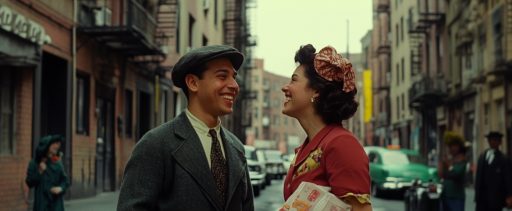When people ask what the thriller genre is, they often expect a checklist: guns, car chases, serial killers, plot twists. But thrillers aren’t defined by props — they’re defined by tension. The real question at the heart of the thriller isn’t just “Who did it?” or “What happens next?” but “How long can the story hold the audience in a state of charged uncertainty?”
What Is the Thriller Movie Genre?
Thriller is a widely used but highly complex label that often overlaps with others.
Case in point: films with very similar plots or tones are sometimes labeled “Thriller” in one context and “Crime drama”, “Mystery”, “Science fiction”, or “Comedy” in another.
But, like horror, the thriller movie genre definition is better understood by what it does to the audience than by any fixed set of props or settings. In his book ‘Cinematic Emotion in Horror Films and Thrillers’, Julian Hanich, Professor of Film Studies, suggests that the thriller is both qualitative and quantitative. Almost every narrative film contains some suspense or danger. A story becomes a thriller film when those elements are pushed to such intensity that they define the whole experience.
Horror critics often talk about the “fantastic triangle” of horror, fantasy, and sci-fi, all built around imagination and fear. Thrillers live alongside that triangle but lean less on the supernatural and more on plausible human danger.
Core Elements of a Thriller Film
Thrillers come from a long storytelling tradition built on uncertainty, and emotional release. The term “thriller” itself became established only in the late 19th century, as modern literature and film began focusing more directly on stories meant to create strong feelings of excitement, fear, and anticipation.
That said, thriller is better defined by conceptual/structural elements and emotional effects than by a specific look. Defining thriller genre characteristics is easier through ‘neighbor’ genres.
For instance, detective stories focus on the process of investigation: gathering clues, solving a mystery, restoring order. There’s usually a defined “endpoint”: the crime is solved, the stolen object is returned, a tragedy is averted.
Thrillers, especially psychological ones, are less about “who did it” and more about the emotional involvement. The path can be messier, and the resolution is often less clean.
If horror is defined by dread and disgust, the thriller is defined by tension and acceleration. Core thriller genre characteristics revolve around a few recurring functions:
- First is ongoing danger: not just one frightening event, but a continuing sense that something bad could happen at any time.
- Second is high stakes. In a crime thriller, that might mean the life of a single character. In a political thriller or medical thriller, it can expand to entire communities, institutions, or even the global order.
- Third is forward momentum: even the quiet scenes are charged with what they are leading toward.
The emotional palette overlaps with horror but tilts differently. Thrillers deal in fear, anxiety, and anticipation, but they stop short of the full “cosmic fear” that supernatural horror seeks.
The threats themselves are usually grounded in reality. Rather than confronting monsters that break natural laws, thrillers focus on dangers that feel plausible: serial killers, corrupt institutions, unstable partners, and dangerous technologies. Classic horror tends to take place in cemeteries, castles, or remote forests; thrillers corrupt the everyday city streets, hospitals, houses, offices, and airports. The key move is not transporting the audience to an exotic realm, but letting the extraordinary invade the ordinary.
Finally, thrillers often follow a structure of order → threat → escalation → confrontation → resolution, with resolutions that are frequently partial or ambiguous. Even when the ending is unsettling, there is usually some sense of regained agency: a truth uncovered, a plot exposed, or a protagonist changed by what they endured.

Subgenres of Thriller Movies
Because the thriller is driven more by intensity and structure than by specific subject matter, it often operates as an “X + thriller” hybrid rather than a stand-alone genre. Subgenres help map out these combinations by showing how thriller conventions merge with the building blocks of other genres.
One of the broadest branches is the crime thriller, which blends the investigative focus of crime fiction with the urgency of the thriller. Here, the emphasis shifts from uncovering “who is guilty” to the race against time: can the antagonist be stopped before the damage is done? Legal thrillers apply the same pressure in courtrooms and law offices, where procedural details, ethical dilemmas, and competing narratives create suspense.
The psychological thriller moves the danger inward. Drawing on ideas similar to horror’s “fantastic” mode, these films often destabilize the line between reality and perception. The audience is invited to question whether the threat is external, internal, or both. Tension comes from fractured identity, guilt, paranoia, and emotional instability rather than from straightforward action. The result is a constant uncertainty about what the characters will do next.
Psychological thrillers typically feature:
- a focus on the inner life of the characters
- mental or moral manipulation
- distorted perception and unreliable viewpoints
- fear and anxiety are used to intensify internal conflict
- antagonists who are often psychopaths, killers, or deeply disturbed personalities
Political thrillers revolve around power struggles, espionage, and institutional corruption, where governments, agencies, or bureaucracies effectively become the “monster.” Medical thrillers unfold in hospitals, laboratories, or outbreak scenarios, channeling real-world anxieties about science, health, or bioethics. Action thrillers borrow the physical spectacle of action adventure—chases, fights, explosive set pieces—but retain the structure of escalating jeopardy and compressed time. Sci-fi thrillers use speculative elements such as AI, surveillance systems, or experimental technologies, yet rely on classic thriller mechanics: ticking clocks, sudden reversals, and moral pressure.
Across all these forms, the thriller functions as a pressure system applied to another genre.
Storytelling Techniques in Thrillers
Thriller genre conventions share certain tools with horror, like controlled ambiguity, misdirection, and psychological pressure, but they repurpose them to build sustained suspense rather than outright terror. In horror theory, “fantastic horror” keeps the viewer suspended between natural and supernatural explanations. Psychological thrillers achieve a similar effect by blurring the boundaries between reality and perception.
Thrillers thrive on timing: what the audience knows, when they know it, and how that knowledge shifts their expectations. Clues are rationed, red herrings are planted, and key details are withheld until the moment they can do the most narrative damage. This creates a deliberate rhythm of temporary clarity followed by renewed uncertainty, a pattern that fuels twists, reversals, and moral surprises.
Character design reinforces this structure. Thriller protagonists are often ordinary people thrust into extraordinary situations. They begin overwhelmed and disoriented. This vulnerability invites identification. Viewers feel the same loss of stability and agency, almost like being strapped into the roller-coaster with them. Their plausibility is part of what makes the threat feel so urgent.
Thrillers also rely on steady, cumulative escalation. The inciting incident disrupts everyday life, and each step of the narrative narrows the protagonist’s options, heightens the stakes, or complicates the moral terrain. Techniques like tight editing, close-up camera work, strategic silence, and sound cues keep the viewer physiologically engaged. Where horror often aims for sudden impact, thrillers aim for ongoing anticipation, stretching suspense across the entire story.
Many modern thrillers draw from real investigative techniques, especially profiling. As crime, forensic psychology, and behavioral science became more central in the late 20th century, thrillers increasingly shifted their attention from procedures to the criminal mind itself. Tension no longer comes only from what the villain might do next, but from how they think, what they want, and how their worldview distorts the world around them.
Thriller Movies That Keep You on the Edge of Your Seat on UVOtv
Enough with theory. Let’s just enjoy the thriller movies in all their glory. UVOtv has a variety of thriller movies available for free, in 40+ languages from around the world. Stream for free now.
FAQ
What is considered a thriller movie?
A thriller movie is a story built around high stakes, escalating danger, and sustained tension. Unlike horror, which leans on shock or the supernatural, a thriller film focuses on plausible threats — a conspiracy, a stalker, a crime in progress, or a secret someone is willing to kill for. Classic examples show how thrillers create suspense through uncertainty, plot twists, and rising pressure, keeping the viewer anticipating what comes next.
What are the three C’s of a thriller?
Writers often describe the three C’s of a thriller as:
- Concealment – Key information is hidden from the protagonist or audience, creating mystery and tension.
- Confrontation – The danger escalates after the inciting incident, forcing the protagonist to face the threat head-on.
- Consequences – The final outcome reshapes the character’s life, even when the resolution is partial or ambiguous.
These conventions reflect thriller genre characteristics across subtypes like crime thrillers, political thrillers, psychological thrillers, and action thrillers.
What are the subgenres of a thriller?
The thriller movie genre includes several well-established subgenres, each shaped by different reader expectations:
- Psychological thriller – Focuses on unstable minds, unreliable perceptions, and emotional manipulation.
- Crime thriller – Driven by investigation, pursuit, and criminal conflict, often involving serial killers or moral ambiguity.
- Political thriller – Built around government secrets, corruption, and power struggles.
- Legal thriller – Centers on the justice system, courtroom tension, and ethical dilemmas.
- Medical thriller – Involves hospitals, pandemics, or bio-threats where science and danger intersect.
- Action thriller – Blends action-adventure pacing with suspense, often featuring large-scale set pieces.
- Sci-fi thriller – Uses science fiction elements (technology, experiments, surveillance) to heighten risk and paranoia.





